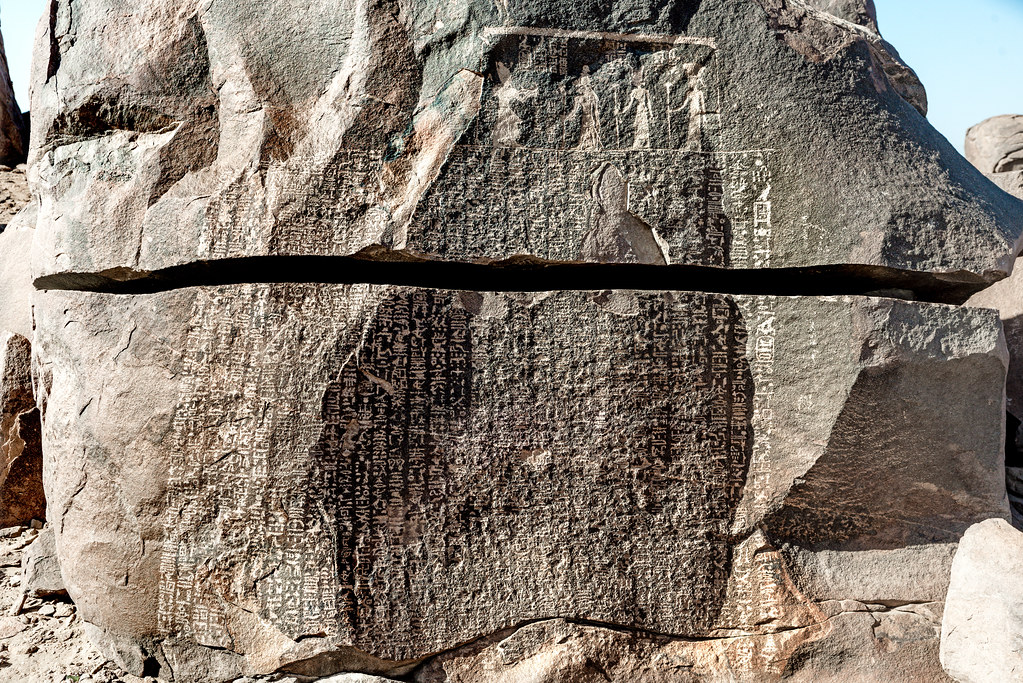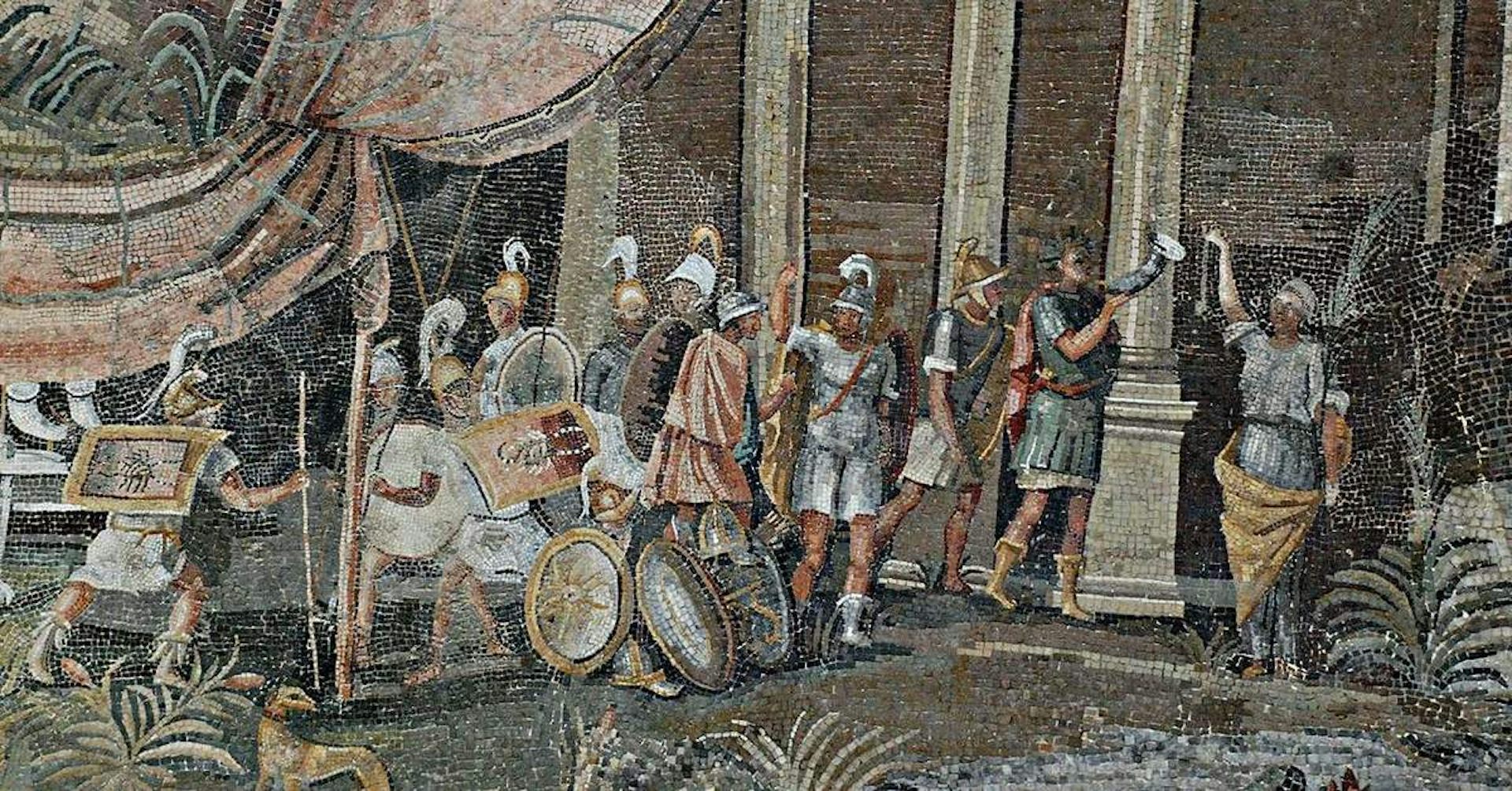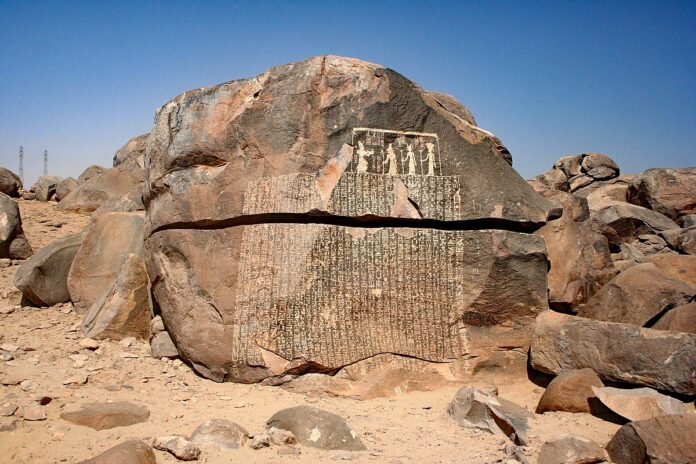On Sehel Island, nestled along the Nile River near Aswan, Egypt, stands a remarkable inscription, carved in ancient Egyptian hieroglyphs, known as the Famine Stela. This stela recounts a period of drought and famine that plagued Egypt during the reign of Pharaoh Djoser of the Third Dynasty. Believed to have been inscribed during the Ptolemaic Kingdom, the Famine Stela provides valuable insights into the religious beliefs, struggles, and the quest for divine intervention in ancient Egypt.
Description of the Famine Stela
The Famine Stela is a rectangular-shaped inscription carved onto a natural granite block. Written in hieroglyphs, it consists of 32 columns. The top portion of the stela depicts three Egyptian deities: Khnum, Satis, and Anuket. In front of them stands Pharaoh Djoser, offering supplications with outstretched hands.
A prominent horizontal crack, which existed prior to the creation of the stela, runs through the middle of the rock. This has caused some sections to be damaged and has rendered a few passages of the text unreadable.

The Story and Significance of the Inscription
The narrative inscribed on the Famine Stela takes place during the 18th year of Pharaoh Djoser’s reign. It depicts the king’s distress and concern as Egypt endures a seven-year drought, leading to famine and the failure of the Nile to flood the farmlands.
Amidst the suffering of the Egyptian people and the violation of laws driven by desperation, Pharaoh Djoser turns to the priestly staff, under the guidance of the esteemed high lector priest Imhotep, for assistance. Djoser seeks to uncover the birthplace of Hapi, the god of the Nile, and the deity residing in that sacred location.

Imhotep embarks on a journey to investigate the archives of the temple ḥwt-Ibety, dedicated to the god Thoth, located in Hermopolis. There, he discovers that the flooding of the Nile is regulated by the god Khnum on Elephantine Island, where Khnum resides and controls a sacred spring. Imhotep then promptly travels to the island.
At the “Joy of Life” temple of Khnum, Imhotep purifies himself and offers prayers and offerings to the god, seeking his aid. In a remarkable dream, Khnum appears to Imhotep, introducing himself and describing his divine powers. The benevolent deity promises to restore the flow of the Nile. Imhotep meticulously records the events of his dream before returning to Pharaoh Djoser to relay the momentous news.
Delighted by the revelation, Djoser issues a decree, commanding priests, scribes, and workers to restore Khnum’s temple and resume regular offerings to the god. Additionally, Djoser grants the region between Aswan and Tachompso, along with its wealth and a share of Nubian imports, to the temple of Khnum at Elephantine.
Dating and Significance of the Famine Stela
The Famine Stela has fascinated historians and Egyptologists since its initial translation and examination by French Egyptologist Paul Barguet in 1953. The language and layout of the inscription suggest a dating to the Ptolemaic period, possibly during the reign of King Ptolemy V (205 – 180 BC). Scholars such as Miriam Lichtheim and Werner Vycichl propose that the local priests of Khnum were responsible for creating the text, possibly to assert their power and influence during the tumultuous times of the Ptolemaic Dynasty.

Interestingly, the theme of a seven-year famine appears not only in the Famine Stela but also in other cultural narratives of the Near East, including the biblical story in Genesis 41, a Mesopotamian legend, and the Gilgamesh-Epos. Another Egyptian tale, the “Book of the Temple,” also tells of a prolonged drought during the reign of King Neferkasokar in the late 2nd Dynasty.
Furthermore, the Famine Stela provides valuable evidence by combining the cartouche name Djeser (“lordly”) with the serekh name Netjerikhet (“divine body”) of Pharaoh Djoser in one word. This aids Egyptologists and historians in reconstructing the royal chronology of the Old Kingdom of Egypt.

The Famine Stela stands as a testament to the challenges faced by ancient Egypt, particularly during the reign of Pharaoh Djoser. It sheds light on the religious beliefs and practices of the time, as well as the role of divine intervention in times of crisis. With its detailed narrative and historical significance, the Famine Stela continues to captivate scholars and enthusiasts alike, offering a glimpse into the rich tapestry of ancient Egyptian history and culture.
Its inscription provides valuable insights into the relationship between the Pharaoh, the gods, and the people, highlighting the lengths to which they would go to alleviate the suffering caused by natural disasters. By studying and deciphering the Famine Stela, we deepen our understanding of the complexities of ancient Egypt and the enduring power of faith and hope in the face of adversity.
